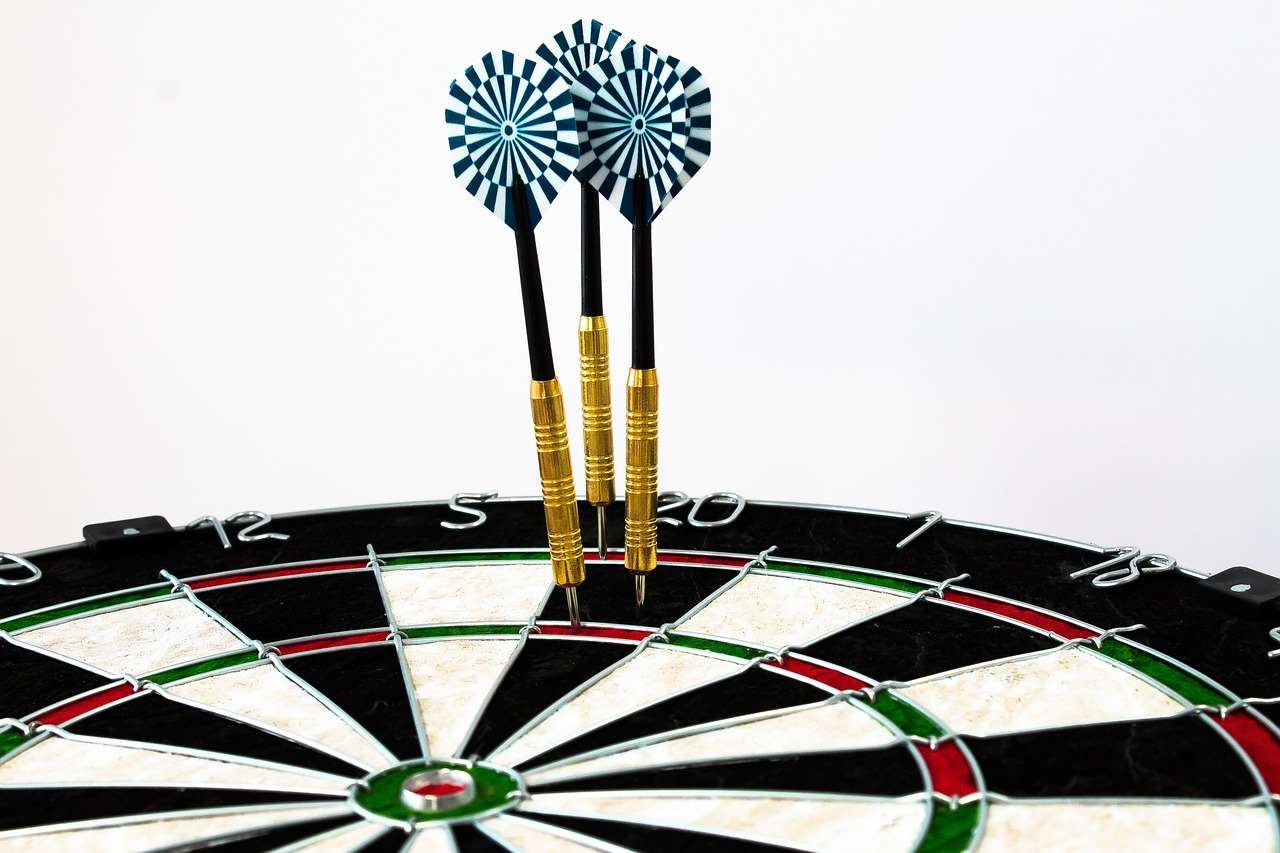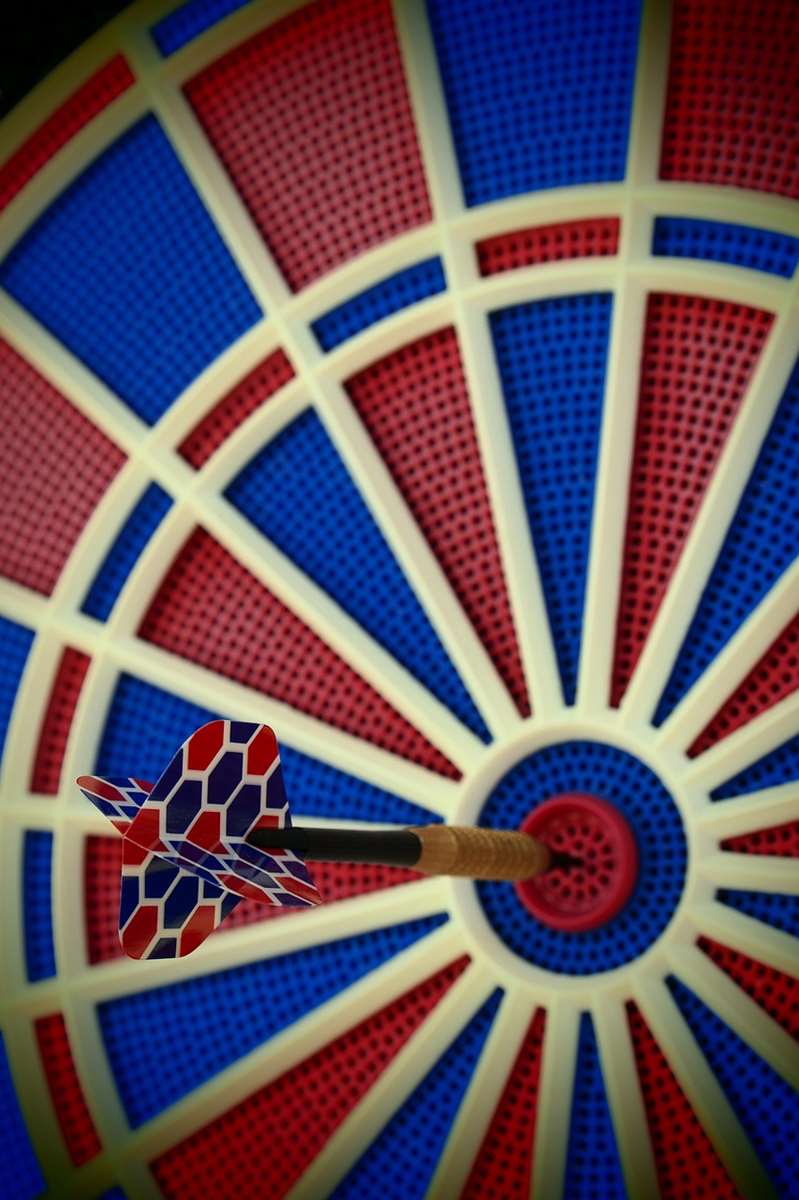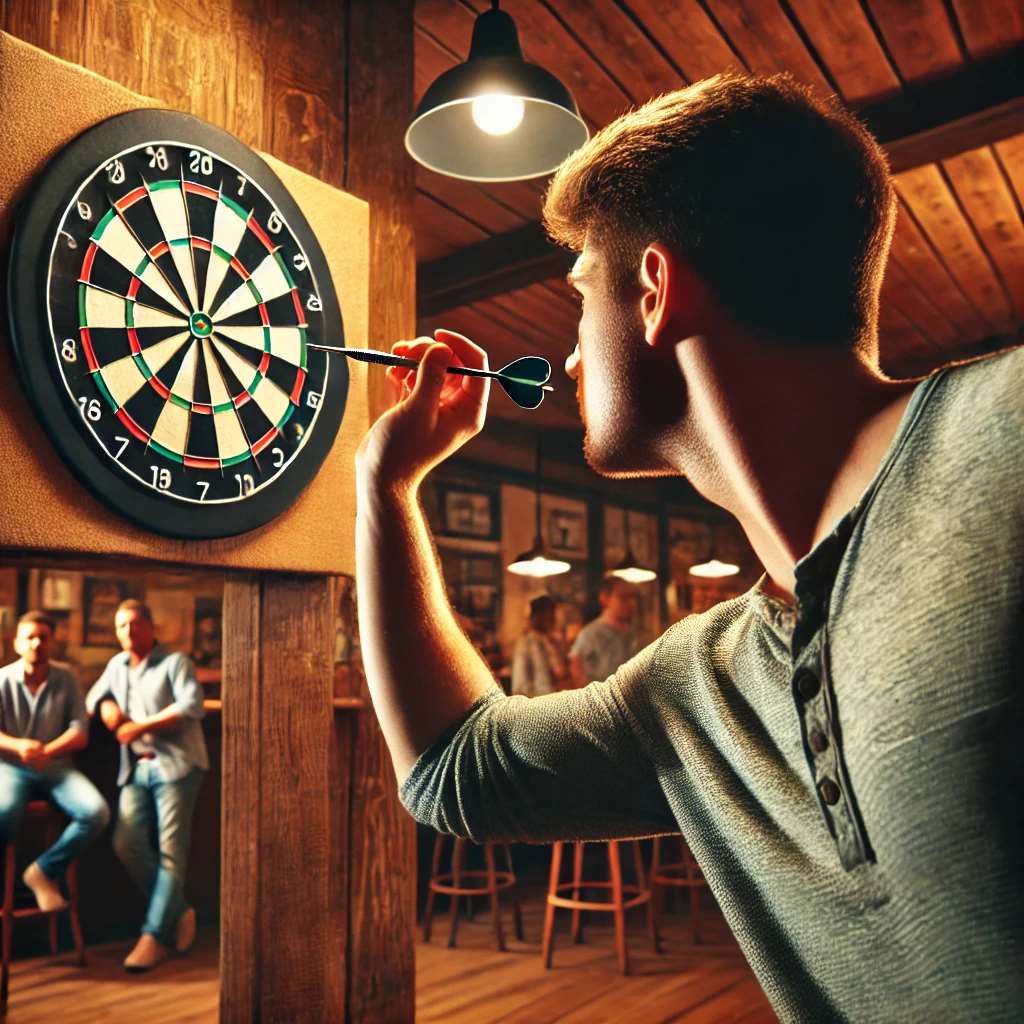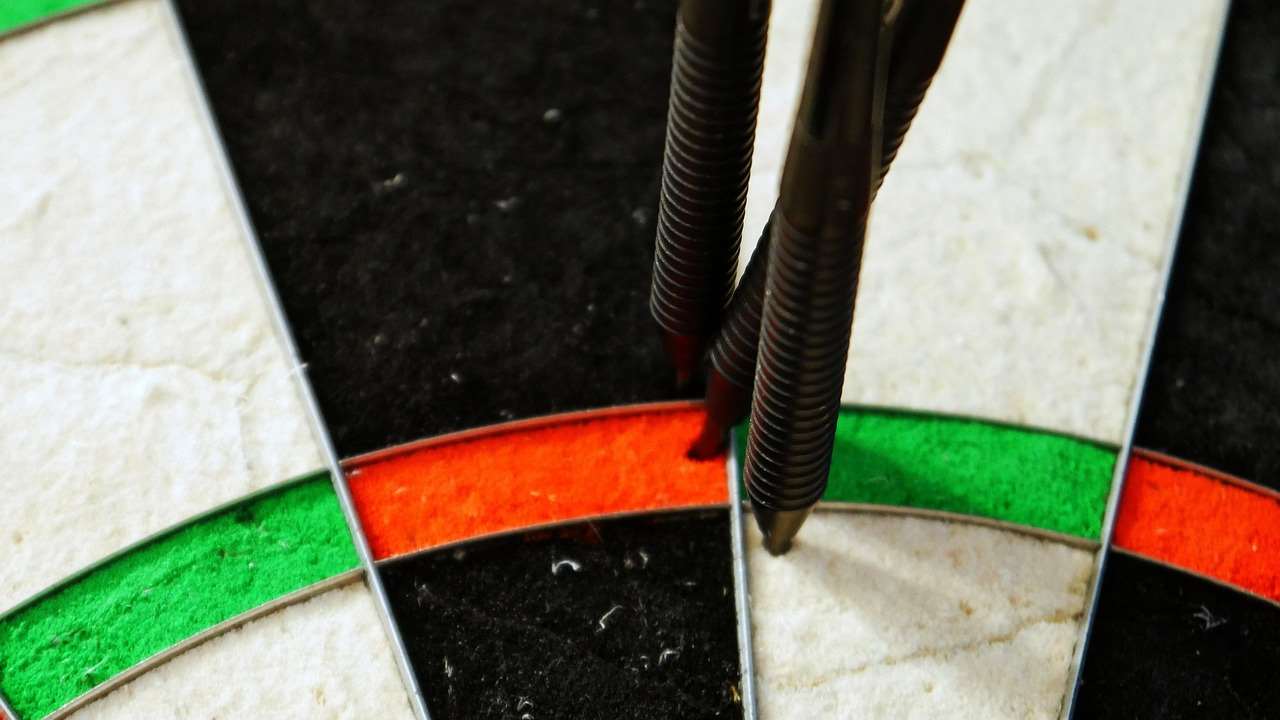The quickest way to fix a bent dart point is often by using a dedicated dart point straightening tool, but there are also various alternative methods you can try. This article explores several techniques for **repairing bent dart points**, from simple fixes to more involved methods, ensuring you can get back to your game as quickly as possible. We’ll also cover preventing future damage and maintaining your darts for optimal performance.
⚠️ Still Using Pen & Paper (or a Chalkboard)?! ⚠️
Step into the future! The Dart Counter App handles all the scoring, suggests checkouts, and tracks your stats automatically. It's easier than you think!
Try the Smart Dart Counter App FREE!Ready for an upgrade? Click above!
Understanding the Problem: Why Dart Points Bend
Before diving into **repairing bent dart points**, it’s crucial to understand why they bend in the first place. Several factors contribute to this common issue. Frequent impact with the dartboard’s wires is a primary cause. Over time, these impacts can weaken the metal of the dart point, leading to bending. Additionally, dropping your darts on hard surfaces, such as concrete or tile floors, can easily bend the points. Even the way you pull your darts from the board can contribute to the problem; twisting or forcing the dart out can put undue stress on the point.
Another less obvious factor is the quality of the dart point itself. Some cheaper dart points are made from softer metals that are more prone to bending. Investing in higher-quality darts with durable points can help prevent this issue in the long run. Finally, consider the type of dartboard you’re using. A very hard dartboard can also increase the likelihood of bent points as more force is required to penetrate the board.

Simple Solutions for Minor Bends
For minor bends, you might not need specialized tools. Here are a few simple solutions:
- Using Pliers: A pair of needle-nose pliers can be surprisingly effective. Gently grip the bent portion of the point and carefully bend it back into alignment. Be cautious not to apply too much force, as this could break the point.
- Rolling on a Hard Surface: Place the dart point on a flat, hard surface like a countertop. Gently roll the dart back and forth, applying slight pressure. This can help straighten out minor bends.
- Finger Pressure: Sometimes, you can simply use your fingers to bend the point back into shape. This works best for very slight bends. Be careful not to cut yourself on the point.
Remember to always proceed with caution when attempting these methods. Gradual, gentle adjustments are key to avoiding further damage.
The Dart Point Straightening Tool: A Professional Approach
For more severe bends or for those who want a more reliable method, a **dart point straightening tool** is the best option. These tools are specifically designed for **repairing bent dart points** without causing further damage. They typically consist of a small metal block with a series of holes of varying sizes. Here’s how to use one:
- Identify the Correct Hole: Choose a hole that is slightly larger than the diameter of your dart point. This allows the point to move freely without being too loose.
- Insert the Dart Point: Carefully insert the bent portion of the dart point into the chosen hole.
- Apply Gentle Pressure: With the dart point inserted, gently apply pressure to straighten the bend. You can roll the dart within the hole or use a levering motion to gradually straighten the point.
- Check the Alignment: Remove the dart point and check its alignment. Repeat the process as needed until the point is straight.
Investing in a good quality **dart point straightening tool** is a worthwhile investment for any serious dart player, especially if you Choose Best Dart Equipment regularly.

Alternative Tools and Techniques
If you don’t have a dedicated **dart point straightening tool**, there are a few alternative tools and techniques you can try:
- Bench Vise: A small bench vise can be used to carefully straighten dart points. Use soft jaws or padding to protect the point from damage.
- Small Hammer and Anvil: For more stubborn bends, a small hammer and anvil can be used. Place the bent portion of the dart point on the anvil and gently tap it with the hammer until it is straight. This method requires a delicate touch to avoid damaging the point.
- Multi-Tool Pliers: Some multi-tool pliers have small jaws that can be used to grip and straighten dart points. Again, be very careful not to apply too much force.
Regardless of the tool you use, remember to proceed with caution and make small, incremental adjustments. This will minimize the risk of breaking the dart point.
Preventing Bent Dart Points: Proactive Measures
While **repairing bent dart points** is a necessary skill, preventing them in the first place is even better. Here are some proactive measures you can take:
- Use a Dart Mat: A dart mat provides a cushioned landing surface for your darts, reducing the impact and likelihood of bending when they fall.
- Proper Dartboard Setup: Ensure your dartboard is properly mounted and secured to prevent it from moving or vibrating excessively. This can reduce the chances of your darts hitting the wires.
- Careful Dart Removal: When removing your darts from the board, avoid twisting or pulling forcefully. Use a gentle, straight pulling motion.
- Regular Maintenance: Inspect your dart points regularly for signs of bending or damage. Address any issues promptly to prevent them from worsening.
- Invest in Quality Darts: As mentioned earlier, investing in high-quality darts with durable points can significantly reduce the frequency of bending.

Maintaining Your Darts: Beyond Straightening Points
**Repairing bent dart points** is just one aspect of maintaining your darts. To keep your darts in top condition, consider these additional tips:
- Sharpening Your Points: Over time, dart points can become dull, making it harder for them to penetrate the board. Use a dart point sharpener to keep your points sharp and prevent bounce-outs.
- Cleaning Your Darts: Regularly clean your darts with a soft cloth to remove dirt, oil, and debris. This will improve your grip and prevent the points from corroding.
- Replacing Damaged Flights: Damaged flights can affect the accuracy and stability of your darts. Replace them as needed to maintain optimal performance.
- Tightening Loose Shafts: Loose shafts can also impact your dart’s flight. Use a dart tool to tighten them securely.
By implementing these maintenance practices, you can extend the lifespan of your darts and improve your overall dart-playing experience.
When to Replace vs. Repair
While **repairing bent dart points** is often possible, there are times when replacement is the better option. If the dart point is severely bent, cracked, or weakened, attempting to repair it may be futile. In such cases, replacing the point is the most sensible course of action. Furthermore, if you’ve repeatedly straightened a dart point, it may become brittle and prone to breaking. Constant bending and straightening weaken the metal. Rather than risk it breaking during a game, just replace it. Consider also the cost of a new point against the time spent **repairing bent dart points**. Sometimes, the convenience of a new, reliable point outweighs the effort of repair.

The Impact of Bent Points on Your Game
Playing with **bent dart points** can significantly impact your game. Bent points can cause several problems, including:
- Bounce-outs: Bent points are less likely to penetrate the dartboard properly, leading to more bounce-outs.
- Inconsistent Flights: Bent points can affect the aerodynamics of your darts, causing them to fly erratically.
- Damage to the Dartboard: Bent points can damage the sisal fibers of your dartboard, shortening its lifespan.
- Frustration: Constantly dealing with bounce-outs and inconsistent flights can be frustrating and detract from your enjoyment of the game.
Addressing bent points promptly is essential for maintaining consistent performance and enjoying your dart-playing experience. If you are struggling to achieve optimal play, then you might want to look into Optimal Dartboard Lighting Solutions Guide as well.
Dart Point Materials and Their Tendency to Bend
The material of your dart points plays a significant role in how easily they bend. Common dart point materials include:
- Steel: Steel points are the most common type and offer a good balance of durability and affordability. However, they can still bend under impact.
- Carbon Fiber: Carbon fiber points are known for their lightweight and strength. They are less prone to bending than steel points but can be more expensive.
- Titanium: Titanium points are the most durable option and are highly resistant to bending. However, they are also the most expensive.
Choosing the right dart point material can help minimize the frequency of **repairing bent dart points**. If you are serious about your game, consider investing in darts with more durable points.

Conclusion: Keep Your Darts Straight and Your Game On Point
**Repairing bent dart points** is a common challenge for dart players of all skill levels. By understanding the causes of bent points, employing appropriate straightening techniques, and taking proactive measures to prevent damage, you can keep your darts in optimal condition and enjoy a more consistent and enjoyable game. Remember to use the right tools, proceed with caution, and consider replacing damaged points when necessary. By prioritizing dart maintenance, you’ll be well-equipped to handle any bends that come your way. Now get back to the oche and keep those darts flying straight!
Ready to take your dart game to the next level? Choose Best Dart Equipment!
Hi, I’m Dieter, and I created Dartcounter (Dartcounterapp.com). My motivation wasn’t being a darts expert – quite the opposite! When I first started playing, I loved the game but found keeping accurate scores and tracking stats difficult and distracting.
I figured I couldn’t be the only one struggling with this. So, I decided to build a solution: an easy-to-use application that everyone, no matter their experience level, could use to manage scoring effortlessly.
My goal for Dartcounter was simple: let the app handle the numbers – the scoring, the averages, the stats, even checkout suggestions – so players could focus purely on their throw and enjoying the game. It began as a way to solve my own beginner’s problem, and I’m thrilled it has grown into a helpful tool for the wider darts community.